While riding out in the wilderness, a dead battery can keep you stranded for hours straight. You will hardly have any way to charge the e-bike battery. What will you do now? Do e-bikes charge when you pedal, you ask yourself.
Well, if your e-bike offers a regenerative braking system, then pedal charging is very possible. However, this method is costly and highly inefficient as the pedal energy needs to be converted three times just to be usable.
The process leaks so much energy that you need to pedal an entire day to have a noticeable charge difference. In fact, a regular rider can’t exceed more than 15% charge back to the battery.
Today, let’s see how we can charge an e-bike battery using the pedal power. We have a lot to cover. Read more below.
Note: Most e-bikes don’t have this feature. You need an e-bike with a regenerative braking system to charge while pedaling.
Can You Charge an E-Bike While Riding?
You can charge an e-bike while riding, but only if your bike has a regenerative braking system. This system allows e-bikes to reverse the flow of electricity to the battery while you ride in pedal mode or apply brakes.
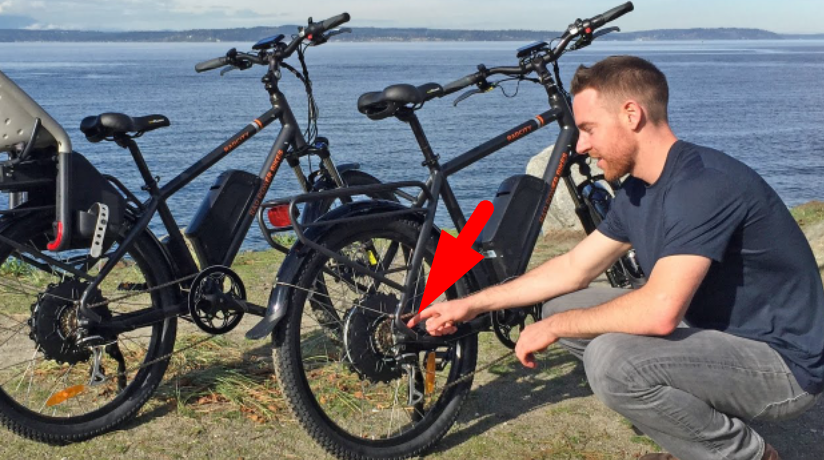
Although you will feel a slight resistance due to the brakes, it’s not a big deal for most riders. There are a few drawbacks of pedal charge, where the cost and low efficiency are the two top ones. Because of which, manufacturers avoid adding this feature in most e-bikes.
Do Electric Bikes Charge when Pedaling: Quick Check
In a hurry? We have just the thing for you. Go through the list to see whether your e-bike has pedal charging abilities or not:
- A direct drive motor/ gear hub motor with the clutch removed
- BMS (Building Management System) for reverse charging
- Reverse charging controller
- A capable battery
Note: These components are a bit expensive, so most e-bike manufacturers just lay them off to save cost.
How Does an E-Bike Recharge While Pedaling?
An e-bike that charges while pedaling uses a direct drive hub motor. The motors have magnets always spinning past the copper coil, which generates electricity while pedaling. Other components like the BMS, controller and rechargeable battery are also responsible for charge regeneration. Let’s dive deeper on how the processes work:
Direct Drive Motor/Gear Hub Motor with No Spring Clutch
A direct-drive motor is kinda like a dynamo. It will spin if you apply current, and also generate electricity when the spinning direction is reversed. On the other hand, most regular e-bike motors don’t have this feature completely.
They use a gear hub motor that has a spring clutch or a freewheel restricting the spin of magnets past the copper coil.
Then again, a gear hub motor with the spring clutch removed can work exactly like a direct hub motor. Well, technically, gear hub motors are just direct drive motors with a spring clutch restrictor.
Building Management System (BMS)
The building management system or BMS is the second important feature for regenerative braking/pedal recharging. A proper BMS redirects the discharge of the motor towards the battery. If your BMS can’t receive charging through the discharge connector, pedal charging won’t work.
Controller for Charge Redirection
A controller will allow you to control the e-bike settings and access the BMS properly. Most e-bikes will allow you to tweak the settings where others won’t be as forgiving. It’s better to buy a control that supports reverse charging.
A Capable Battery
Most lithium-ion batteries can achieve regenerative braking standards. However, some of them keep on charging after the 100% mark.
Suppose you like on a hilltop and your e-bike is at a hundred percent. Turns out, the battery will keep on charging even after hitting 100%.
Not a good sign is it? The battery might just explode with too much juice. So, you need to find a battery that can discharge the extra voltage.
E-Bike Charge when Pedaling: When Is It Useful?
Pedal recharging can be a life-saver if you are stranded down a mountain top with a dead battery. No matter how much you try, pedaling just ain’t powerful enough. If you have pedal recharge enabled, you can just take a quick ride and regenerate enough power to take you all the way.
Plus, this feature can add a few extra miles to your range. Though the boost isn’t too much, you will still have some to take you home.
The best part is that you can brag about the pedal recharging feature to your friends. Whenever you race with friends, a pedal recharge feature will make sure you win every time.
Drawbacks of Pedal Charging (regenerative Braking)
In the case of pedal recharge, the cons outweigh the pros. That’s why manufacturers leave pedal regeneration as a whole. For starters, the components needed for pedal recharge are more expensive.
You will need a modernized controller, BMS system, a motor, and a battery for the job. These may cost double the price of regular e-bike components.
On the other hand, pedal recharging will get you about 15% more battery life max. Increasing the battery life is more cost-effective for manufacturers.
Who would want an e-bike that will break the bank and not offer a good experience, right?
The Math Behind E-Bike Pedal Recharge (regenerative Braking)
Pedal recharge is just charging your e-bike in reverse. Well, technically this is way more complicated than that. Here are the paths your pedal power needs to follow to charge the battery:
Pedaling Produces Mechanical Energy
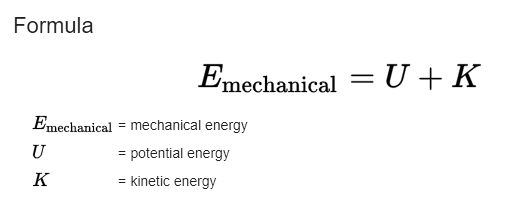
The Mechanical Energy Converts Into Electrical Energy
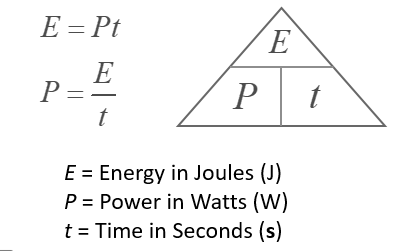
The Electrical Energy Converts Into Chemical Energy Inside Battery Packs
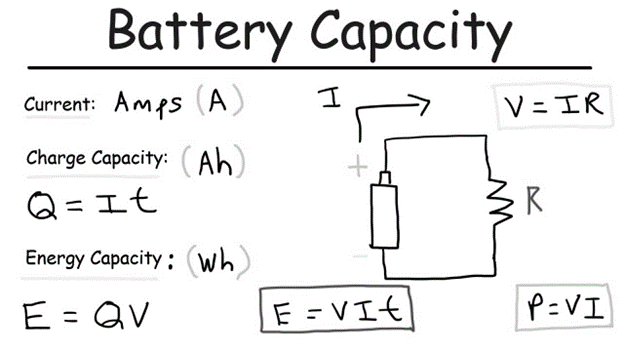
Efficiency of The Whole Process
Due to too many conversion steps, e-bikes tend to not lose power in the form of heat. The equation is,
Efficiency = useful power out ÷ total power in
As most of the power is dissipated as heat, you can expect to have an overall efficiency of 20%.
How to Make a Self-Charging Electric Bike?
To make a self-charging e-bike you need a few components like the BMS, controller, battery setup, and a direct hub motor. You are basically integrating regenerative braking inside your old e-bike.
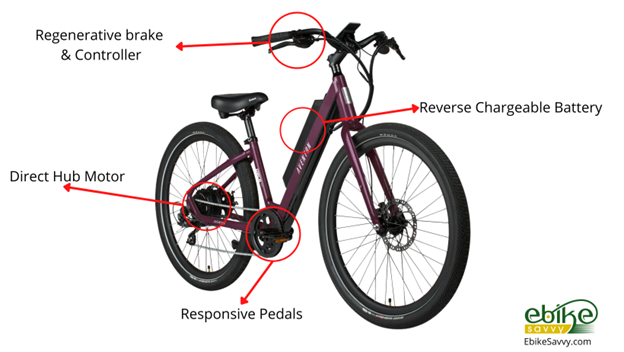
Note: You need to have a good knowledge of the mechanics of an e-bike. A single faulty connection can ruin the entire build and pose a threat at the wrong time.
Frequently Asked Questions
Why Is Pedal Recharging (regenerative Braking) so Rare in E-Bikes?
Pedal recharging is rare in e-bikes because of the highly inefficient process and component cost. An e-bike with pedal recharging will cost twice as much as a regular one. Then again, the riders will get a charge production of 15% on average. It will be more cost-effective to increase the battery life and dump the regenerative braking function.
Do Electric Bikes Charge While Going Downhill?
E-bikes with regenerative braking (Pedal recharging) do charge while going downhill. However, you need to check whether it charges too much or not. If you start at a 100% charge, the battery may just overcharge if the BMS doesn’t have charge restriction enabled.
What Are E-Bikes that Can Charge While Pedaling?
The e-bikes that can charge while pedaling are:
- Rad City
- Eahora X5, X6, X7
- RadCity Step-Thru3
- Turbo Creo E-bikes
- Stormer St1
End Note
Hope now you know the ins and outs of e-bike pedal charging. Overall, the feature isn’t something out of this world. You will still have to charge your e-bike via a charger.
After every trip, you will get about 15% extra battery charged. It isn’t a huge deal for power, but will cost you a heck lot of money.
At the same price, you can just get a more powerful battery with double the efficiency. This is why manufacturers prefer not to include this feature as a whole.
Well, this is it for today. We have hit the ending part. If you have any questions, let us know.
